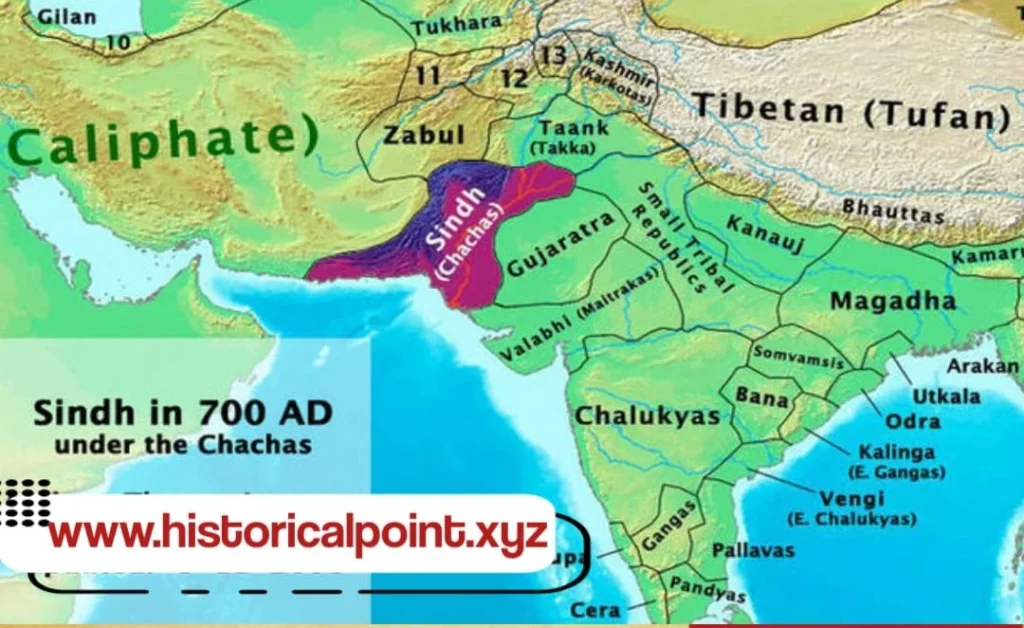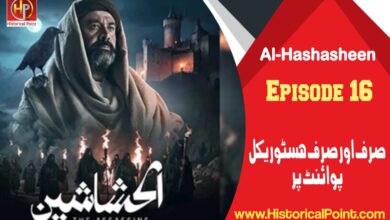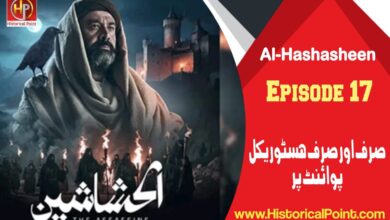
History of Muhammad Bin Qasim
Muhammad bin Qasim was an Umayyad general who conquered Sindh in the 8th century, establishing early Islamic rule in South Asia. He was a hero of the Islamic conquest. He was born in about AD 801 and died at the age of 20 or 22 during his second campaign against Raja Dahir’s kingdom, which had been weakened by many years of attacks from other Muslim armies.
Muhammad Bin Qasim is considered one of the greatest military leaders in history, having conquered almost all parts of present-day Afghanistan (except Khorasan) and Pakistan with his army of Arab-Persian cavalrymen, Turanians, Kurds and Turks. His death remains a mystery because no one knows whether he died in battle or succumbed to illness while on campaign.
To get more information about Historic Heroes, visit www.historicalpoint.xyz
Background of Muhammad Bin Qasim
Here’s a table with key information about Muhammad bin Qasim:
| Category | Details |
|---|---|
| Full Name | Muhammad bin Qasim al-Thaqafi |
| Birth Year | 695 CE |
| Birthplace | Ta’if, Umayyad Caliphate (modern-day Saudi Arabia) |
| Age at Death | 20 years |
| Death Year | 715 CE |
| Death Place | Mosul, Umayyad Caliphate (modern-day Iraq) |
| Father | Qasim ibn Yusuf |
| Conquest Year | 711 CE |
| Primary Achievement | Conquest of Sindh and Punjab (modern-day Pakistan) |
| Ruler During Conquest | Caliph Al-Walid I |
| Significant Battle | Battle of Debal |
| Governor of Sindh | Appointed by the Umayyad Caliphate after conquest |
| Legacy | Initiated Islamic rule in the Indian subcontinent |
Muhammad Bin Qasim was a Muslim hero who conquered Sindh and laid the foundations of Muslim rule in South Asia.

Muhammad Bin Qasim was a Muslim conqueror and military leader who laid the foundations of Muslim rule in South Asia. He was born around 710 CE, and he died at the age of 20 or 22. His full name was Muhammad Bin Qasim Al-Thaqafi; he was also known as Abul-Hajjaj (Arabic for “father of victory”).
Muhammad Bin Qasim is celebrated by both Muslims and Hindus because he defeated Raja Dahir at Debal and captured Sindh (now part of Pakistan). He also built mosques across his new territory, including one at Multan which still stands today.
You can read about Sultan Muhammad Fateh on Historical Point website.
He gained notoriety for leading an attack on Raja Dahir’s kingdom after the governor of al-Hira in Iraq was killed.
Qasim was sent to Sindh by the governor of al-Hira in Iraq. He was a great military leader and strategist. His death remains a mystery, and he is said to have died at the age of 20 or 22.
Qasim quickly defeated Dahir after conquering Debal (now known as Thatta), which became part of Qasim’s territory. The conquest included other areas including Multan, Uch (now known as Bahawalpur) and Rahmatabad (now known as Sukkur).
Muhammad Bin Qasim is considered a great military leader and strategist
Muhammad Bin Qasim is considered a great military leader and strategist. He was also a conqueror who conquered the Sindh region of India in 712 AD. His death remains a mystery, but it is believed that he died at the age of 20 or 22 during his campaign in China.
Muhammad Bin Qasim’s father, Abdullah bin Abdul-Mutallib was from the tribe of Banu Hashim (one of the main branches of Quraish). His mother was called Baraka bint Zaid Al-Ansariya Al-Qurashiya Al-Mughira bint Hisham bin Abdulmalik bin Marwan who belonged to another branch of Quraish called Bani Makhzum.
His death remains a mystery, and he is said to have died at the age of 20 or 22.
Muhammad Bin Qasim was killed in battle at the age of 20 or 22.
There is no evidence to support the claim that Muhammad Bin Qasim was killed in battle and there is also no evidence to support the claim that he died at the age of 20 or 22.
Qasim quickly defeated Dahir after conquering Debal
After conquering Debal, Qasim quickly defeated Dahir in a battle. The army of Muhammad bin Qasim was much larger than that of Dahir, who was killed in the fighting. With the conquest of Sindh, his kingdom collapsed and became a province of the Umayyad Caliphate ruled from Damascus by Caliph Abdul Malik ibn Marwan (685-705).
His army included Arabs, Persians, Turanis, Kurds, Turks, Greeks, Afghans and Indian converts to Islam.
Muhammad bin Qasim’s army was made up of men from many different ethnic backgrounds and countries. The army included Arabs, Persians, Turanis (Turks), Kurds and Turks. It also had a large number of Greeks who were converted to Islam by force during his conquest in Sindh. There were also Afghans and Indian converts to Islam in the army as well.
He is celebrated as a great conqueror by both Muslims and Hindus
Muhammad bin Qasim is celebrated as a great military leader and strategist. He is also celebrated by Hindus as a great hero. The city of Bhagdad was founded in 762 AD by the Abbasid dynasty and became their capital.
The city became one of the most important cultural centers in the Middle East with its famous libraries, mosques, palaces and gardens.
Many monuments were built in his honor
Qasim’s name is inscribed on the tomb of the saint Hazrat Khwaja Shamsuddin Auliya in Delhi. He was also honored with a mosque in Multan and another in Lahore. A shrine was built for him in Sindh, Pakistan by his son, Muhammad bin Qasim II (died 997 CE).
The British East India Company built a fort on top of this hillock called “Quesser Manzil” or “Qaisar Manzil” after Qasim’s name. The remnants of this fort still exist today as an archaeological site near the town of Umerkot.
Muhammad Bin Qasim was a great conqueror who helped spread the Muslim faith throughout South Asia.
Muhammad Bin Qasim is considered a hero by Muslims and Hindus alike. He is celebrated as a great conqueror, who helped spread the Muslim faith throughout South Asia.
His death remains a mystery, but there are many theories about how he died. Some say that he was poisoned by his enemies; others say he was killed in battle or assassinated by his own men. Regardless of how Muhammad Bin Qasim died, it’s clear that his legacy lives on through his descendants – including many kings who ruled over parts of India until 1947 when India became independent from British rule
Conclusion
Muhammad Bin Qasim was a great conqueror who helped spread the Muslim faith throughout South Asia. He was born in A.D. 892 and died in 910 at the age of 20 or 22, which makes him one of the most important rulers in history.
He conquered Debal and then conquered Sindh, which was ruled by Raja Dahir, who had murdered Muhammad’s deputy governor in Iraq before he could return home to take revenge on his killer’s family – all after only being on earth for four years!
Explore More at Historical Point
To delve deeper into the lives and legacies of historical figures like Sultan Muhammad Fateh, Muhammad Bin Qasim, visit Historical Point website for a wealth of insightful articles and comprehensive analyses.
.محمد بن قاسم جیسے تاریخی ہیروز کی زندگیوں کے بارے میں جاننے کے لیے ہسٹوریکل پوائنٹ ویبسائٹ وزٹ کریں



